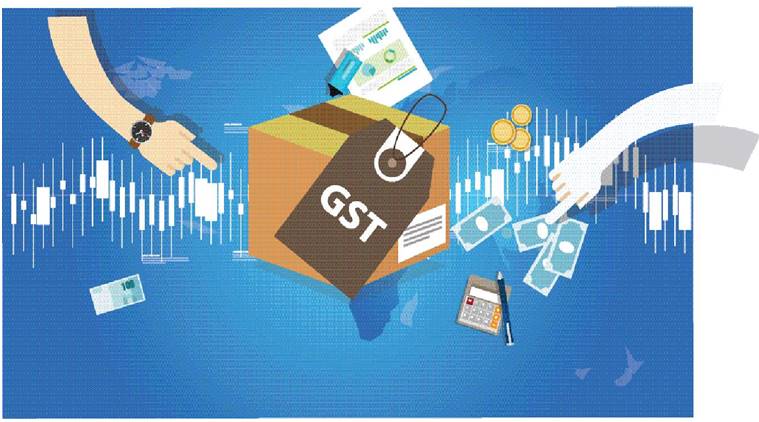GST, a buoyant force
Aggregate revenues have done well, despite headwinds, especially for less developed, consuming states

From a revenue perspective, and especially considering the headwinds, the GST has been a positive development: Overall, for the states, and especially for most of the less developed, consuming states.
One fiscal year into the implementation of the GST, it is worth asking how it has performed in terms of revenue generation both for the country and for individual states. And here the news, based on analysing nine full months of data, is encouraging. Three important and new points stand out.
One, aggregate revenues are highly buoyant. In this year’s Economic Survey, we had argued that confusion reigns in understanding GST performance because of focusing on one or more of the bewildering sub-categories of the GST (CGST, SGST, IGST, cess etc). To assess how the new system is doing, we need to understand overall GST performance, both actual collections and collections stripping out some of the clearly transitional factors (call it “steady state” performance).
Based on the first nine months of data (and including April 2018 collections in those of March 2018, as they should be), revenue collections for nine months were Rs 8.2 lakh crore (11 lakh crore annualised), yielding revenue growth of 11.9 per cent, compared with the relevant pre-GST numbers. The implied tax buoyancy (responsiveness of tax growth to nominal GDP growth) is 1.2, which is high by the historical standards for indirect taxes.
But another measure (more indicative of the medium run) of revenue performance is to strip the actual collections of transitional factors. Some of these will boost future performance (for example, a large overhang of CGST credit has kept last year’s revenues down), and some might depress them (uncleared export and other pending refunds have inflated last year’s revenues).
It is difficult to precisely quantify these factors but rough estimates yield an annual (steady-state) aggregate GST revenue growth that is likely to be greater than the actual collections growth of 11.9 per cent.
A moment of reflection indicates that these revenue growth and buoyancy estimates are in fact quite surprising considering three significant headwinds that the GST faced: Implementation challenges in the first year of a massively disruptive tax change; decelerating growth in the economy (both nominal and real) which tends to dampen revenue growth; and finally, the large GST rate reductions that were effected throughout the first nine months, but especially after November 2017, which should also have lowered revenue collections.
Two, “true” compensation requirements are minimal. Recall that in the period leading up to the Constitutional Amendment bill in 2016, the need for compensating the losing states animated the discussions and created deep anxieties. How has the GST fared on this score?
The government itself produces estimates which show that compensation, although financeable from within the GST, has been substantial. But compensation from a legal perspective is quite different from compensation from an economic perspective. The true measure of compensation is one that arises after all the revenues (from the unsettled IGST and the cess) are first allocated to the individual states. The fact that the unsettled IGST and the compensation cess are in a centralised kitty does not mean that they do not accrue to the Centre and individual states. We undertook such a notional analysis, making a few assumptions.
Once all the GST taxes are allocated to individual states, we find that very few states should require compensation and that the sum of all these compensation amounts is between Rs 5,000 and 10,000 crore. Again, this low compensation requirement is surprising given the early anxieties; but it was something that was predicted in the Report on the Revenue Neutral Rate that one of us had written for the government in December 2015. What it shows is that even in the first year, nearly all the states have seen their revenues grow by at least 14 per cent (and this against a background of decelerating growth and reductions in rates).
Another implication of this new finding is that on current trends, and given likely improvements in compliance with the introduction of e-way bills and invoice matching, nearly all the states will register revenue growth in excess of the 14 per cent guarantee in the years ahead. The Centre’s commitment to compensate the states for five years might be rendered largely moot, and quite soon. If so, scope will be created for revisiting the structure of GST rates and cesses.
Three, GST is boosting revenues of consuming states. One of the factors contributing to the political acceptability of the GST was the fact that many of the Opposition-ruled states (for example, UP, West Bengal and Kerala) were net consuming states that stood to gain from the GST, or so they thought. Has that expectation been met? Evidence from the first nine months suggests that it has, with a few exceptions. How do we know this? Once we correctly attribute all the GST revenues to the states, we can compare the share of the different states in the GST revenues compared with their share in taxes in the pre-GST regime.
This analysis highlights a few patterns. There are very few states where there is a significant decline in the post-GST share compared to the pre-GST share consistent with the finding that “true” compensation requirements are small. Many of the net consuming states, such as nearly all the North-eastern states as well as UP, Rajasthan, MP, Delhi, Kerala, and West Bengal, have indeed increased their post-GST shares. States that have seen a small decline in their shares are states that had special tax regimes in terms of incentives or in agriculture. The GST appears, therefore, to be, desirably, a force for fiscal convergence.
After the first nine months of implementation, there is, of course, a full agenda for future reform: Further simplifying the rate structure, widening the base to include currently exempted sectors, and streamlining procedures for filing and refunds.
But on the revenue front, performance has been very encouraging. Aggregate GST revenues have performed remarkably buoyantly (despite three headwinds), there has been a desirable and equitable shift in revenues toward the consuming states, and this has happened without threatening the revenues of the producing states reflected in the small compensation requirement.
From a revenue perspective, and especially considering the headwinds, the GST has been a positive development: Overall, for the states, and especially for most of the less developed, consuming states.
The writers work in the Union Ministry of Finance
For all the latest Opinion News, download Indian Express App







































No hay comentarios:
Publicar un comentario